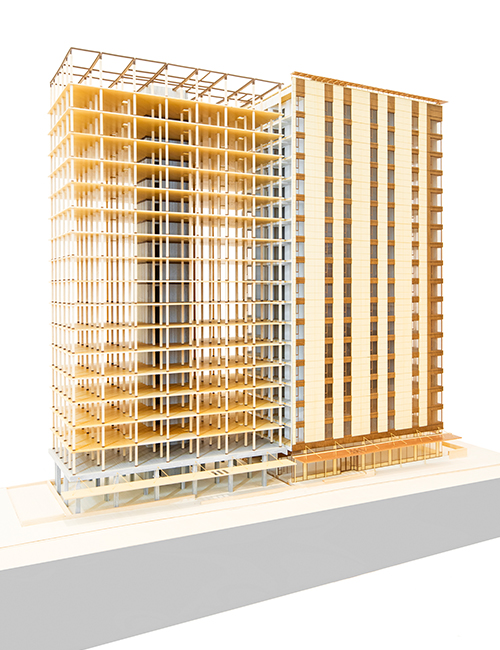In the last e-edition we brought you news of the current tallest wooden building. Designers and Architects love wood but how far can we push the limits. Let’s find out.
In 2012 the World’s tallest wooden building was built at Docklands in Melbourne. At 10-storeys high it set the stage for what was to be an explosion of tall timber towers constructed around the World. In the last Supplier we presented the record-breaking 18-storey student accommodation building in Vancouver, Canada. Unfortunately the wood structure is almost completely covered; it seems that moisture and fires are still an issue, at least for the Canadians.
In the next few years there are several new tall wooden buildings planned. The 53-metre high Brock Commons in Vancouver may be beaten by “Hyperion,” a 57-metre tower in Bordeaux, France. “Haut,” a 73-metre tower proposed for Amsterdam should be next on the list with a start date proposed for late next year. Next could be “Tratoppen,” a 133-metre tower in Stockholm with an exterior covered with giant wooden numbers corresponding to the number of the floor.
The next big timber building project after these may be the aptly-named Oakwood Tower in London. It not just smashes all current records; at 80-storeys and 300 metres it obliterates all competition. One wonders just how much timber will be in the final proposal. It will be an extension of the Barbican Centre in Central London so maybe the design will take advantage of the existing building to hold it all up. The Queen called the Barbican “One of the wonders of the modern World” when it opened in 1982 and the public voted it London’s ugliest tall building in 2014.
Dr. Michael Ramage of the Centre for Natural Material Innovation at Cambridge University says “”There’s a whole bunch of new materials made out of wood that are structurally able to build big buildings.” If Oakwood Towers is approved, the building will be made from “white wood” grown on plantations, possibly in Russia. What interests Ramage most though is bamboo that grows five times quicker than wood and has similar strength properties. Some architects also believe that it may be possible to genetically modify wood to make it more suitable for tall timber structures.
Perry Adebar is the University of British Columbia’s civil engineering department head and says “We are on this hype of ‘Oh, timber is fantastic, aren’t we great’ but eventually we’ll come back to being rational and use timber where it should be used and we won’t be covering them in drywall.” It will be interesting to see how far the Architects will go.

